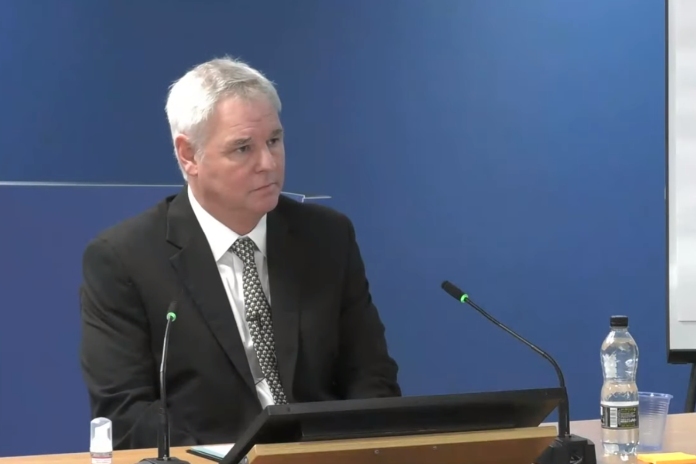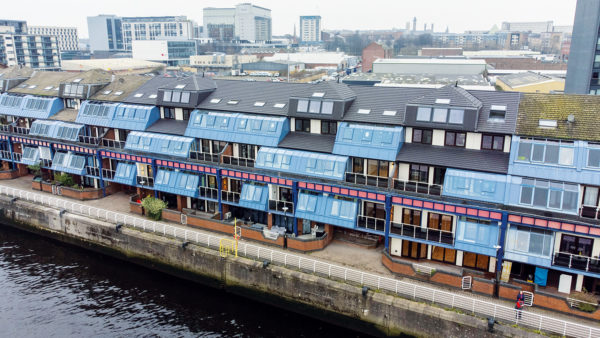
The director of the cladding subcontractor that worked on the refurbishment of Grenfell Tower has branded building safety legislation “complicated” and blamed it for sowing “widespread confusion” within construction about the combustibility of cladding products and insulation.
Harley Curtain Wall director Ray Bailey, who appeared as a witness before the Grenfell Tower Inquiry for a second day, also called for any form of combustible cladding or insulation to be banned immediately.
Bailey was probed at length by leading counsel to the Inquiry Richard Millett QC about his understanding of the certification of the products used on Grenfell Tower.
Bailey repeatedly asserted that he thought the Celotex PIR rigid insulation board used on the tower was “class 0 throughout”, referring to sales literature from the manufacturer that he claimed to have seen.
However, Millett branded the term “class 0 throughout” as “erroneous”. He pointed out to Bailey that he was equating “limited combustibility throughout” with “class 0” – which would be correct – with “class 0 throughout” with “limited combustibility” – which would be incorrect.
Millett highlighted the Centre for Window and Cladding Technology (CWCT) Technical Note 73, produced in March 2011, to Bailey. The note said: “To satisfy the recommendations in Approved Document B, insulation and filler materials in walls of a building with a floor more than 18m above ground level are required to be of limited combustibility.”
The note added: “The only commonly used insulation material that will satisfy the definition of limited combustibility is mineral wool. It is sometimes argued that thermoset insulation materials with non-combustible facings may be regarded as satisfying the requirement, noting that their decomposition in fire will release smoke.”
Definition of ‘limited combustibility’
Millett asked Bailey if he understood at the time of the Grenfell Tower project that the only commonly used insulation material that would satisfy the definition of “limited combustibility” was mineral wool.
Bailey replied: “At the time, Kingspan had become accepted in the industry as a product that was suitable for use over 18 metres. Prior to 2009, every project we did had Rockwool on it.”
He continued: “I thought we were covered in two ways, that – and our thoughts were the material was of limited combustibility, and if that’s incorrect, we accept that.
"In addition, there was a BS 8414 test, so it was a material that had had a whole series of tests, it was a fantastic product. On the certificate, we saw that it said it had been tested with different facing material. We sent our details to Celotex to get them…to confirm that they were happy for us to use it in that situation.”
Millett asked: “Was it not up to Harley to satisfy itself that it was safe to use by making the appropriate investigations?”
Bailey replied: “Well, we made the investigations with the manufacturer.”
Millett continued: “Was there any reason why you couldn’t ask either Studio E or Exova, who had been involved in this project and remained involved in this project, to undertake the investigations of the fire safety nature of this 24 product?”
Bailey answered: “Well, the product was specified by Studio E. Exova were their fire consultant.”
Confusion
Bailey added that there was confusion “across the industry” about class 0 and limited combustibility.
Asked if there was anything he would have done differently on the project, he replied: “I have been asking myself that for the past three years. Looking back to what we knew then, certification that we had, the industry practices that were used throughout the UK, if we were faced with the same job now, I suspect, I ’m pretty certain, that we would have done it exactly as we did back then.
“I can’t think for a second that anybody in the construction team working on Grenfell or on the hundreds of other buildings that we similarly constructed across the UK, nobody would have thought for one minute that anything we were doing was unsafe.
"But if I could go back in time, armed with what I know now, the certification, the testing regimes, the caveats , the misinterpretation of the Building Regulations, that are not just restricted to us but the whole industry. This stuff, Reynobond, Celotex, Kingspan, none of it would be on the wall.
"The legislation is complicated to use, it’s not very clear, and I think any form of combustible insulation or cladding should be banned immediately. I know that’s not my place to say, but if the building regs banned it, it wouldn’t be on the building. Class 0, as I sort of understand how that came into being, was some industry self-interest body created this false class and it’s clouded everybody’s judgement and belief over the past 40 years. Things need to change.”
The Inquiry continues.









